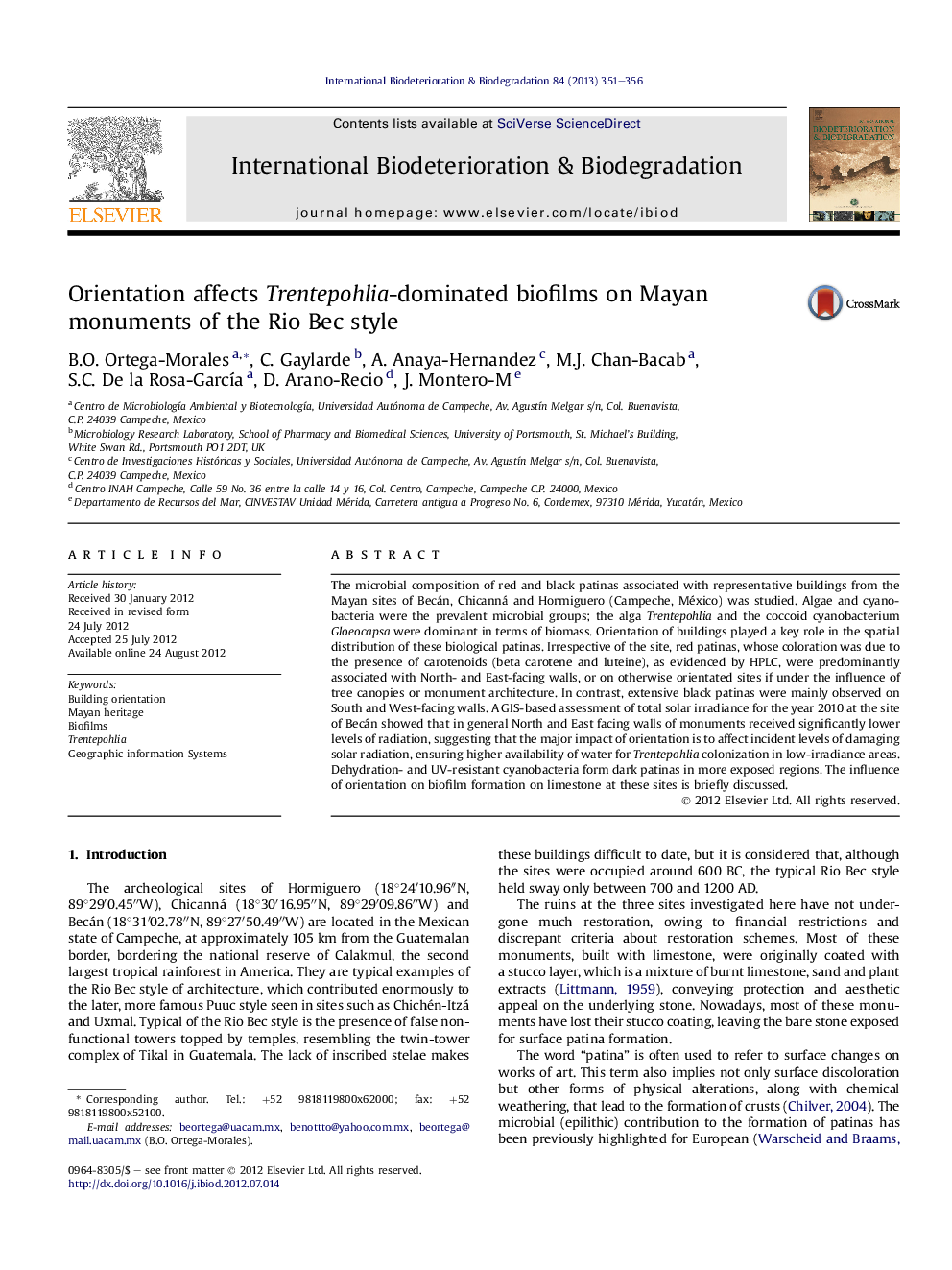| Article ID | Journal | Published Year | Pages | File Type |
|---|---|---|---|---|
| 6289502 | International Biodeterioration & Biodegradation | 2013 | 6 Pages |
The microbial composition of red and black patinas associated with representative buildings from the Mayan sites of Becán, Chicanná and Hormiguero (Campeche, México) was studied. Algae and cyanobacteria were the prevalent microbial groups; the alga Trentepohlia and the coccoid cyanobacterium Gloeocapsa were dominant in terms of biomass. Orientation of buildings played a key role in the spatial distribution of these biological patinas. Irrespective of the site, red patinas, whose coloration was due to the presence of carotenoids (beta carotene and luteine), as evidenced by HPLC, were predominantly associated with North- and East-facing walls, or on otherwise orientated sites if under the influence of tree canopies or monument architecture. In contrast, extensive black patinas were mainly observed on South and West-facing walls. A GIS-based assessment of total solar irradiance for the year 2010 at the site of Becán showed that in general North and East facing walls of monuments received significantly lower levels of radiation, suggesting that the major impact of orientation is to affect incident levels of damaging solar radiation, ensuring higher availability of water for Trentepohlia colonization in low-irradiance areas. Dehydration- and UV-resistant cyanobacteria form dark patinas in more exposed regions. The influence of orientation on biofilm formation on limestone at these sites is briefly discussed.
⺠The influence of Mayan building orientation on biofilms was studied. ⺠Trentepohlia and Gloeocapsa dominated red and black patinas, respectively. ⺠Red patinas were predominantly associated with North-facing walls. ⺠Levels of solar radiation were highly dependent on building orientation. âºÂ Carotenoids were responsible for the coloration of Trentepohlia-dominated patinas.
